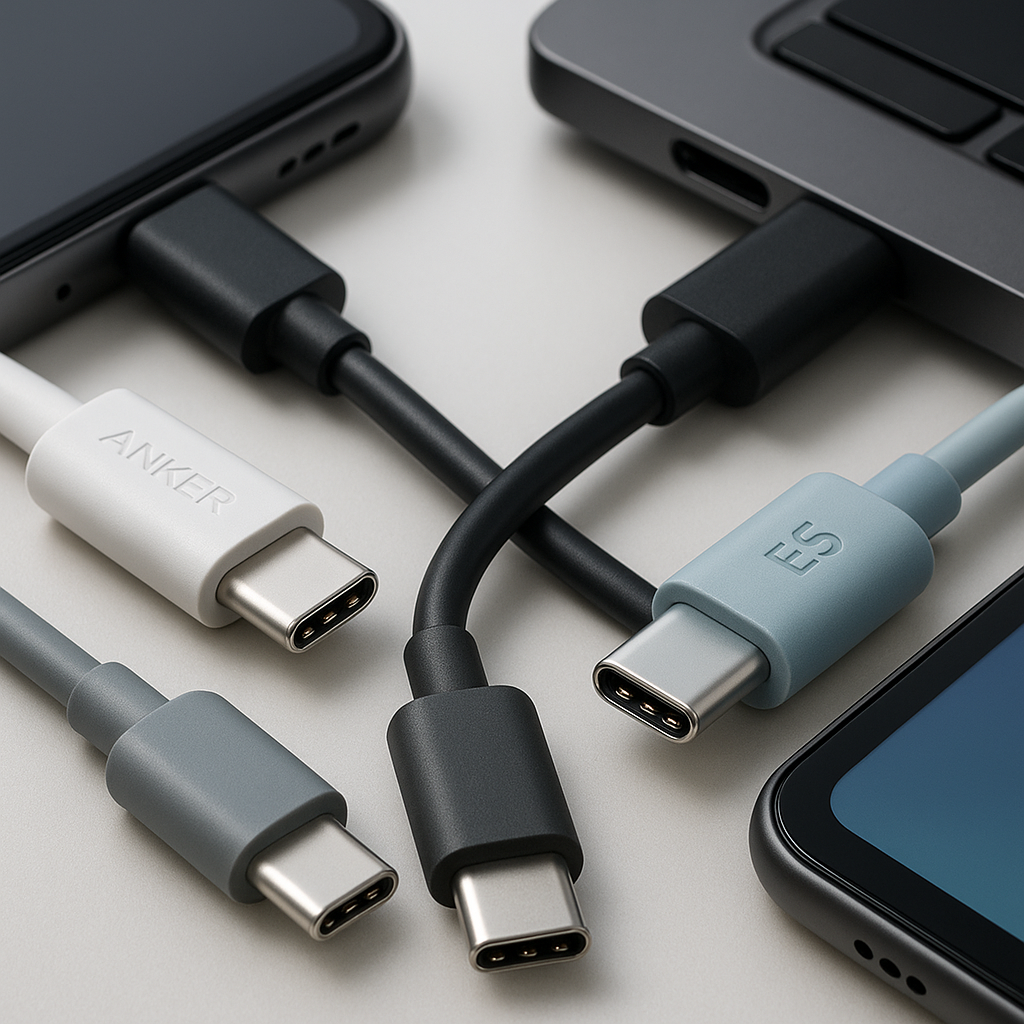Find helpful posts and internal links on topics like USB Type-C, noise-cancelling technology, and more.

Your Guide to the USB-C Takeover: Why All Your Gadgets Are Making the Switch
Have you ever stared at that one drawer in your house, the tangled nest of a dozen different charging cables, and wished for a simpler time? One cable for your old phone, another for your tablet, a different one for your laptop, and none of them fit your friend’s device. Well, that simpler time is finally arriving, and its name is USB-C. You’ve seen the small, oval-shaped port on new iPhones, Android phones, laptops, and even headphones. This isn’t just another random change to make your old cables obsolete. The move to USB-C is a deliberate, industry-wide upgrade designed to make our digital lives more powerful and convenient. Here’s the ultimate breakdown of why USB-C is becoming the new king of connectors.
1. The Dream: One Connector to Rule Them All
The single biggest reason for the switch is universal adoption. The goal is for this one connector to replace a whole host of others: the old rectangular USB-A, the smaller Micro-USB, Mini-USB, and even dedicated power and video ports like HDMI and DisplayPort.The design itself is a huge step up:
- It’s Reversible: No more fumbling and flipping the plug three times to get it in correctly. The symmetrical, oval design means it works no matter which way you plug it in.
- It’s Compact & Durable: It’s small enough for the thinnest smartphones but robust enough for powerful laptops, making it the perfect one-size-fits-all solution.
[Image: A tangled mess of old USB cables next to a single, sleek USB-C cable]
2. More Power, Faster Charging
Older USB ports were fine for charging phones, but they couldn’t handle the power demands of larger devices. USB-C changes the game with a technology called Power Delivery (PD). This allows USB-C cables to negotiate and deliver significantly more power. What does this mean for you?
- Charge Your Laptop: The same charger you use for your phone can now power up your laptop.
- Faster Charging Speeds: Power Delivery enables much faster charging for all compatible devices.
- Portable Laptop Power: You can now use a USB-C power bank to charge your laptop on the go, freeing you from the wall outlet.
3. Blazing-Fast Data Speeds
It’s important to understand that USB-C is the shape of the connector, while the speed is determined by the technology behind it (like USB 3.2, USB4, or Thunderbolt). The USB-C connector was built to be a superhighway for data. While your old USB-A port might have felt slow when transferring large files, a modern USB-C port can:
- Transfer a full 4K movie in under a minute.
- Back up huge photo libraries in a fraction of the time.
- Connect to ultra-fast external SSDs without a bottleneck.
Think of USB-C as the high-performance racetrack, and technologies like USB4 and Thunderbolt 4 are the Formula 1 cars that drive on it.
4. The Ultimate All-in-One Cable
Perhaps the most impressive feature of USB-C is its versatility. Through a feature called “Alternate Mode,” a single USB-C port can transmit more than just data and power. It can also handle:
- High-Resolution Video: Connect your laptop directly to a 4K monitor with a single USB-C cable that can also charge your laptop at the same time. No separate power brick or HDMI cable needed!
- Audio: This is why many new phones have ditched the traditional headphone jack.
- Multiple Functions at Once: Plug one USB-C cable into a dock or hub and instantly connect to multiple monitors, an external hard drive, an Ethernet network, and a power source, all through that one port on your laptop.
5. A Nudge from Regulators
The final push for universal adoption has come from governments. Most notably, the European Union mandated that by the end of 2024, most new electronic devices, including the iPhone, must use USB-C for charging. The goal is twofold: to reduce electronic waste by allowing people to reuse chargers and cables, and to make life simpler for consumers.
The Takeaway: A Better Future (After a Little Transition)
Yes, the transition period can be a bit annoying. For a little while, you might need a dongle or an adapter to connect your new laptop to an older device. But the long-term benefits are undeniable. The move to USB-C promises a future where one cable can charge your phone, power your laptop, connect to your monitor, and transfer files at incredible speeds. The tangled drawer of cables is finally on its way out, replaced by a single, powerful, and truly universal standard.

